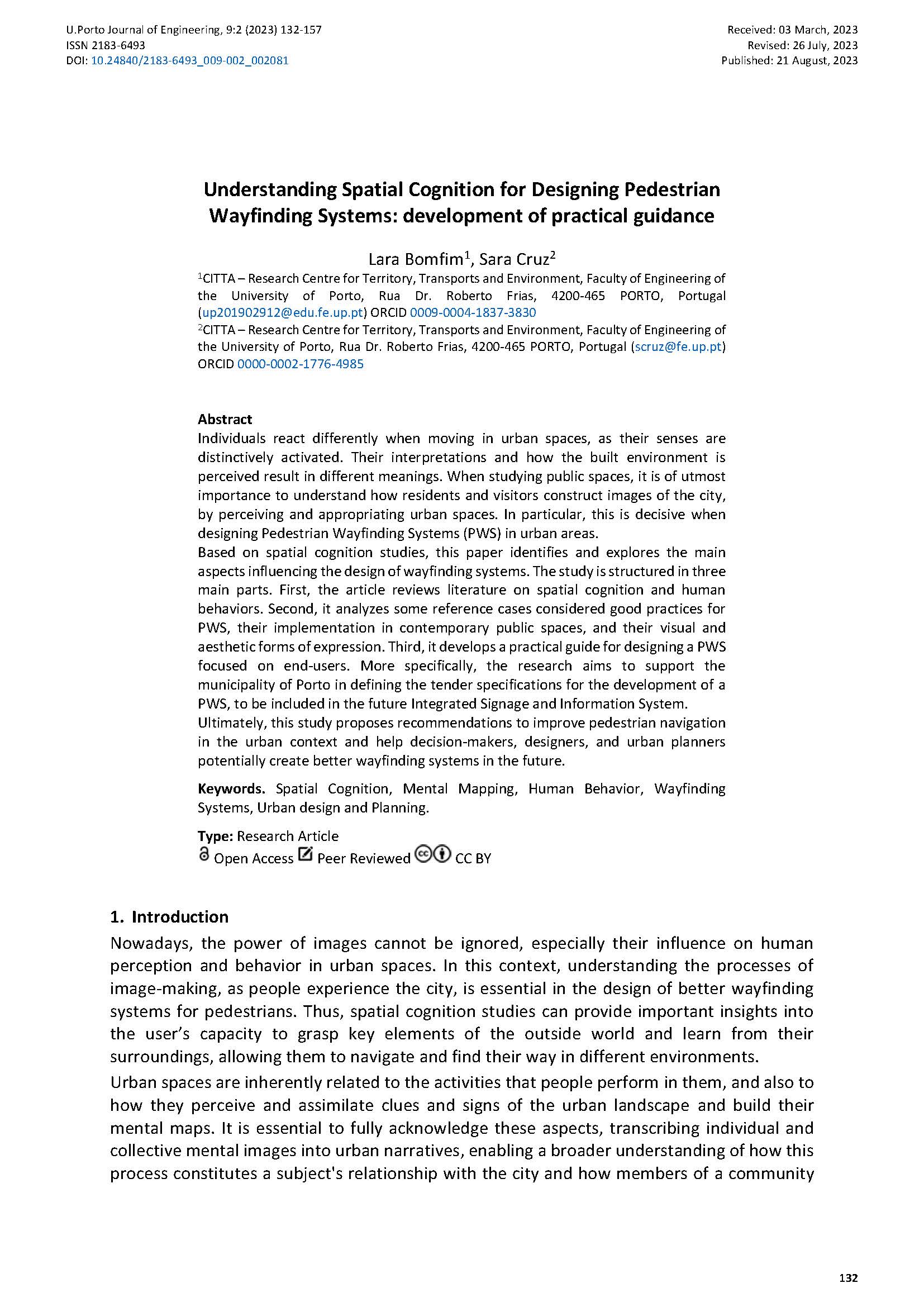Understanding Spatial Cognition for Designing Pedestrian Wayfinding Systems Development of practical guidance
Main Article Content
Abstract
Individuals react differently when moving in urban spaces, as their senses are distinctively activated. Their interpretations and how the built environment is perceived result in different meanings. When studying public spaces, it is of utmost importance to understand how residents and visitors construct images of the city, by perceiving and appropriating urban spaces. In particular, this is decisive when designing Pedestrian Wayfinding Systems (PWS) in urban areas.
Based on spatial cognition studies, this paper identifies and explores the main aspects influencing the design of wayfinding systems. The study is structured in three main parts. First, the article reviews literature on spatial cognition and human behaviors. Second, it analyzes some reference cases considered good practices for PWS, their implementation in contemporary public spaces, and their visual and aesthetic forms of expression. Third, it develops a practical guide for designing a PWS focused on end-users. More specifically, the research aims to support the municipality of Porto in defining the tender specifications for the development of a PWS, to be included in the future Integrated Signage and Information System.
Ultimately, this study proposes recommendations to improve pedestrian navigation in the urban context and help decision-makers, designers, and urban planners potentially create better wayfinding systems in the future.
Downloads
Article Details

This work is licensed under a Creative Commons Attribution 4.0 International License.
Authors who publish with this journal agree to the following terms:
- Authors retain copyright and grant the journal right of first publication with the work simultaneously licensed under a Creative Commons Attribution License that allows others to share the work with an acknowledgement of the work's authorship and initial publication in this journal.
- Authors grant the journal the rights to provide the article in all forms and media so the article can be used on the latest technology even after publication and ensure its long-term preservation.
- Authors are able to enter into separate, additional contractual arrangements for the non-exclusive distribution of the journal's published version of the work (e.g., post it to an institutional repository or publish it in a book), with an acknowledgement of its initial publication in this journal.
- Authors are permitted and encouraged to post their work online (e.g., in institutional repositories or on their website) prior to and during the submission process, as it can lead to productive exchanges, as well as earlier and greater citation of published work (See The Effect of Open Access).

